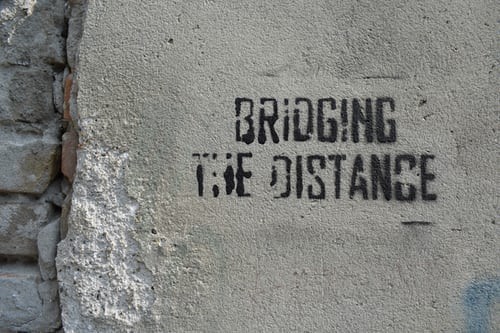For more: Diversity@work project
Several studies have showed that diversity in a company’s workforce that reflect the multicultural identities of consumers will have benefits in the way these consumers will buy services or products from that company. This pattern is easily seen in the following trends, accordingly to a report issued by Nielsen in 2014:
– The consumer patterns are changing in the EUA, since 2nd and 3rd generations of immigrants get access to better jobs and thus have more buying power. In this country, since 2014, stats show that minorities, all together, are actually becoming the majority.
– These new consumers can join several cultural and ethnic identities (sometimes called ambicultural identity) and search for products and services that reflect their mixed identities. Also, the presence of so many different cultures has also had an influence in natives, which have increasingly showed to choose differently than a few years ago (as we can easily see in examples like Kizomba, Sushi, and other ethnic products that are nowadays things everyone knows). The growing communication technologies have also an important role in this both-way acculturation. This means we can no longer look at the market as before, making general assumptions about consumer patterns.
– The multicultural households are usually larger, meaning that any brand bought by these families has a larger influence on upcoming generations.
– Younger generations have more mixed identities, since probably have had the chance to socialize more with different cultures.
Also, it is proven that more innovation and resilience come from having a diverse workforce. The staff in a company that actively promotes diversity are also usually more engaged, motivated and productive, since in the end feeling valued for who you are is good for everyone.
The numbers obtained by McKinsey and Co. (2015) state that companies with cultural diverse workforces will outperform others in 35%. Diverse teams lead to better group performance, reputation, customer connections, market share and innovation. Diversity can be the answer to avoid group thinking, a phenomena that has proven enemy of a companies’ ability to respond effectively to changes in the market.
How can companies address these changes?
One of the first recommendations from the specialists is that companies look at diversity as an added value for business, and that any program implemented that intend to achieve some kind of impact, must address all kinds of diversity, avoiding “the boxes approach”, implementing measures that apply to only one “box” of people (eg: LGBT, disabled, etc.). Valuing diversity and becoming a pluralistic work place is a matter of DNA, it means transforming a company into one were everyone values everyone else (including those from majority groups, research has showed that targeting for only one minority group might have a negative effect on majority consumers) for who they are and for what they bring to the company, every day (Wiebren S. Jansen, Sabine Otten and Karen I. van der Zee). This means a serious bet on diversity, and can be implemented in many ways:
– Identify the role of multicultural consumers in your business area and design new business and marketing strategies. Investing in multicultural marketing has proven to have a short-term return on investment, but also a long term effect, since it promotes brand loyalty (Nielsen, 2014).
– Maintaining a diverse workforce is another way to address the changes in the market and attract diverse consumers. Also, the more diverse a company’s workforce is, the better will it innovate and respond to new changes. This might mean changing your candidate pool, and the way and places you advertise for job openings (Ratna Omidvar, 2015).
– Targeting younger consumers since youth tends to be more cultural aware and diverse, and are usually trend starters, master the new technologies and communications, using it to promote services and products (Nielsen, 2014).
– Hiring diverse supplier sources is another way to get multicultural consumers attention that has proven impact on sales. It sends a message that your company is committed to improving quality of life of immigrants and their descendants, believes in the quality and values a diverse range of products and services. As suggested by the DiverseCity Toronto report (2012) a more diverse supplier chain reflects your consumers group. Immediate benefits can also be reduced costs, since these companies tend to be smaller, more flexibility in negotiations and access to original products not easily found in larger suppliers. This might prove to be a challenge, so you might have to be available to help suppliers that need certification, improve business strategies or training to meet your demand. Doing that you can at the same time engage employees in volunteering as a CSR strategy.
– Investing on Diversity Awareness training: all the benefits of diversity onlyhappen when a company really takes advantage of the diversity in their workforce and in their consumers, and sees it as an opportunity and an investment. This means having a company mind-set, reducing unconscious bias and getting everyone acting accordingly, especially those in management positions (Leadear´s toolkit on Diversity, Diversitycentral.com, Canada). Check out our Linkedin page for more training tools available soon: Diversity@work
– Develop partnerships with local community and grassroot organizations that represent diversity groups in your target market. It can mean also getting to a more diverse pool of candidates for job positions, or to develop local and social intervention projects in your CSR strategy. This will improve your knowledge on cultural mind-sets and decrease cultural biases your company might have (Leadear´s toolkit on Diversity, Diversitycentral.com, Canada).
Article written by Carla Calado (Aga Khan Foundation Portugal)
Resources
McKinsey Report on Diversity: http://www.mckinsey.com/Insights/Organization/Why_diversity_matters
Ratna Omidvar, 2015, “Hack the hiring process to reap diversity’s bottom-line benefits”, The Globe and Mail http://www.theglobeandmail.com/report-on-business/rob-commentary/hack-the-hiring-process-to-reap-diversitys-bottom-line-benefits/article24573564/
Diversecity report, 2012, “Supplier diversity in the GTA: bussines case and best practices”: http://diversecitytoronto.ca/wp-content/uploads/DiverseCityCounts6-report-web.pdf
Nielsen, “Ethnifacts report on multicultural Edge Super Consumers”, 2014, http://www.ethnifacts.com/THE_MULTICULTURAL_EDGE_RISING_SUPER_CONSUMERS_2015.pdf
Leader´s toolkit on Diversity, 2012, Diversitycentral.com
Wiebren S. Jansen, Sabine Otten and Karen I. van der Zee “Being part of diversity – The effects of an all-inclusive multicultural diversity approach on majority members’ perceived inclusion and support for organizational diversity efforts“ was published in the peer-reviewed journal „Group Processes & Intergroup Relations“ by Dutch researchers
Clark, Lindlsey 2015, “Fast Facts: diversity and inclusion around the world”, Diversity Best Practices: Diversity facts




